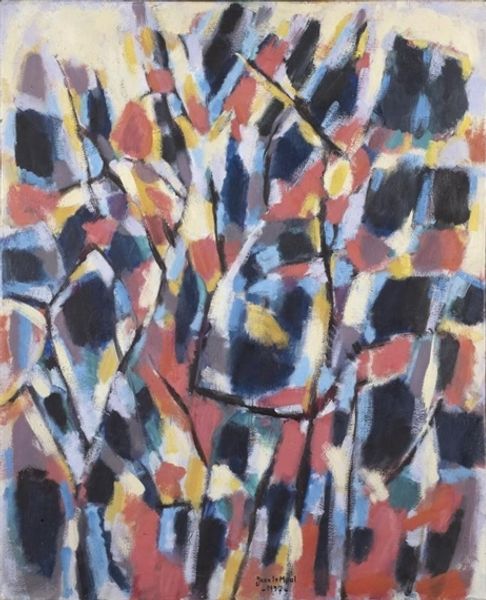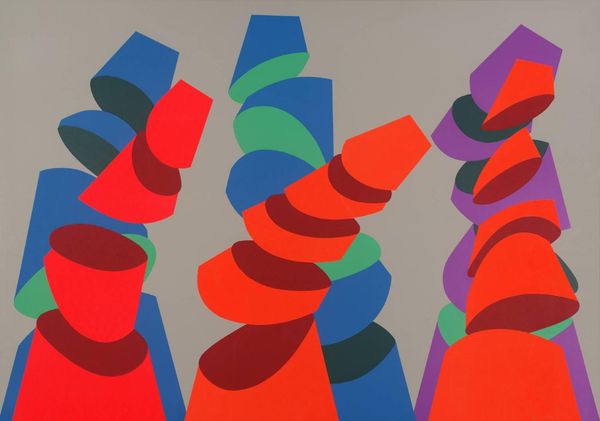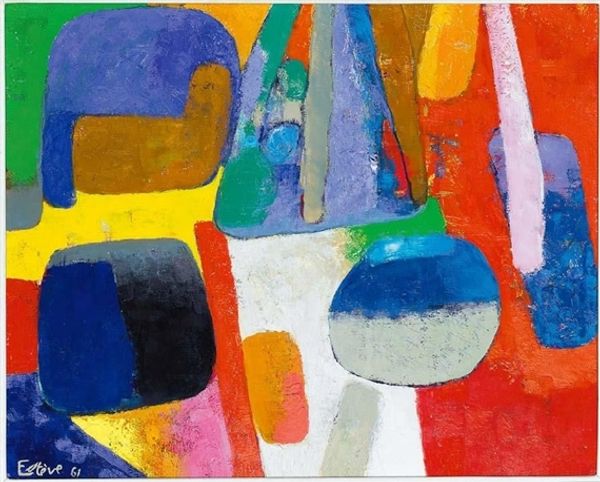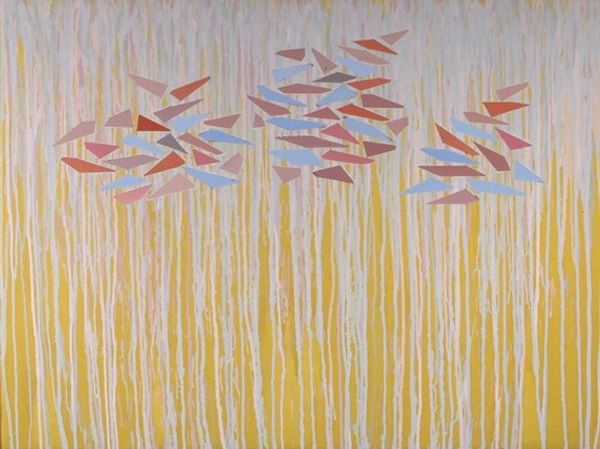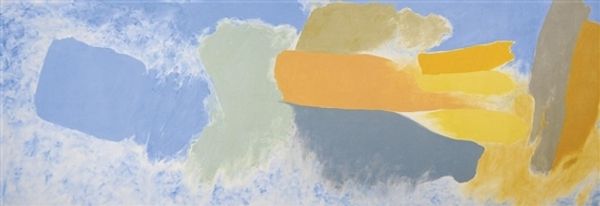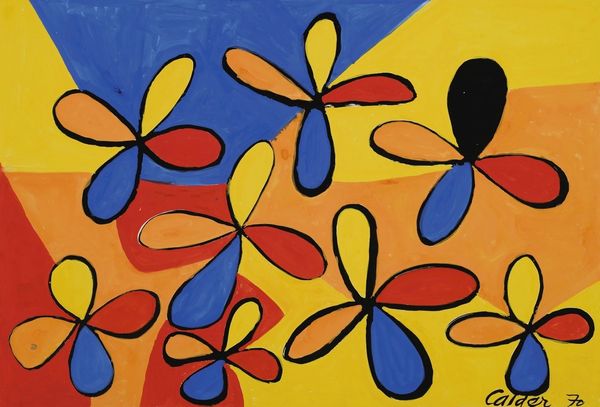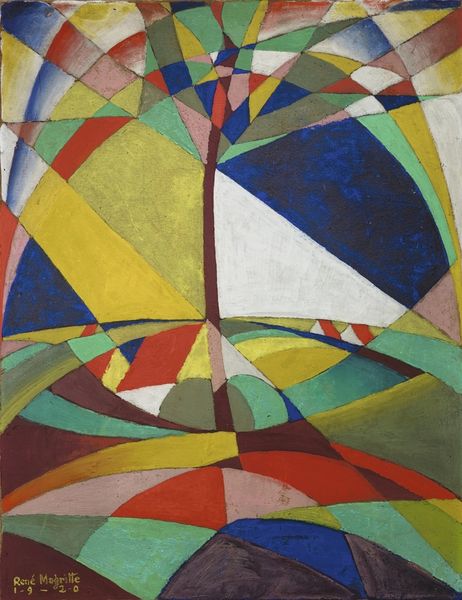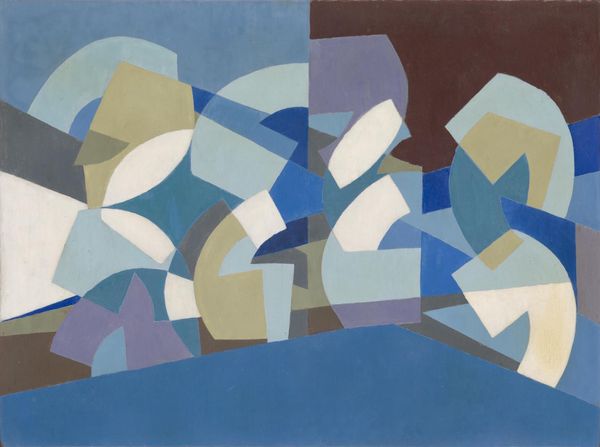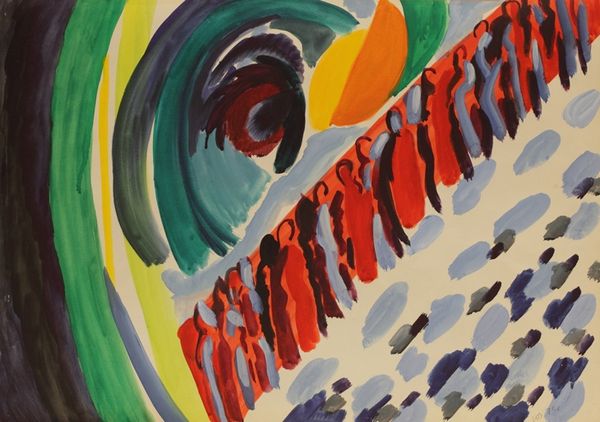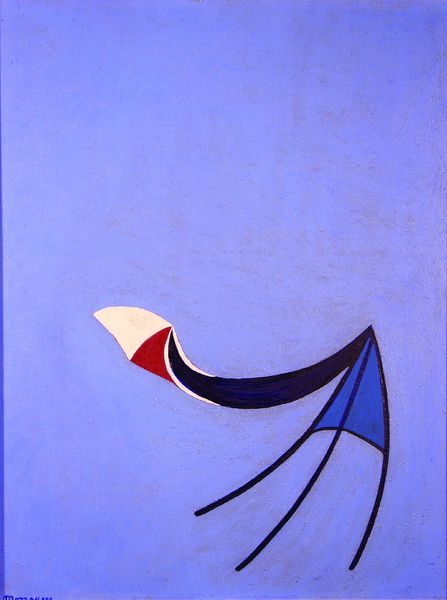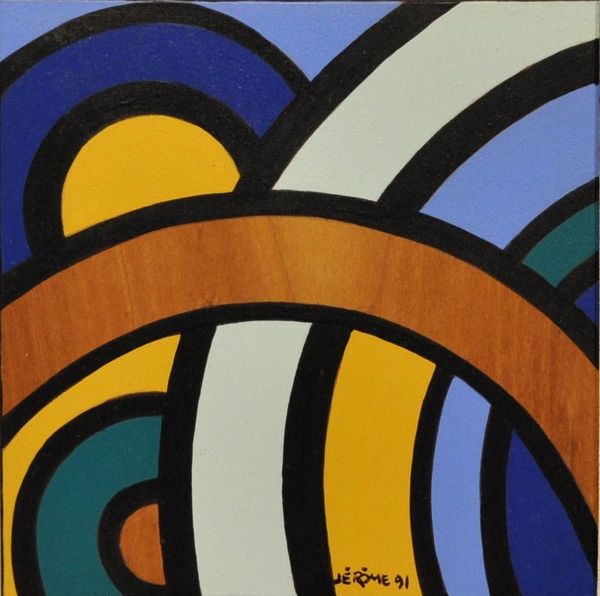
painting, acrylic-paint
#
purism
#
painting
#
landscape
#
acrylic-paint
#
abstract pattern
#
geometric
#
flower pattern
#
geometric-abstraction
#
abstraction
#
line
#
modernism
Copyright: Amedee Ozenfant,Fair Use
Editor: Okay, so here we have Amédée Ozenfant’s "Voilier" from 1963, rendered in acrylic paint. It's a really striking piece; the simplified shapes create a feeling of serene movement. I am curious, what are some ways you interpret this work, especially considering its historical context? Curator: Well, seeing this, I think it's important to remember that Ozenfant was a major figure in the Purist movement. Given that, "Voilier" isn't just a nice scene. How do you feel about it’s visual organisation? It may be read as Ozenfant's way of using geometric forms to suggest order and harmony. But harmony within what? Perhaps within the rapidly changing world of the mid-20th century. Editor: I hadn't really thought of it that way, but now it makes so much more sense. The geometric forms do impose a very distinctive and perhaps self-contained organization. And is there something socio-political here, too? Is there something to glean from the fact that Ozenfant returned to painting after a period dedicated to teaching and writing? Curator: Exactly! Ozenfant always saw art as a means of social improvement, a way of shaping collective consciousness. Maybe coming back to painting later in life was a conscious decision, an effort to re-engage directly with the public through imagery in a changing environment. One thing is his enduring effort in maintaining visual structures and basic forms, even facing such challenges as World War eras and cultural paradigm shifts. Editor: It’s fascinating to see how his Purist ideals continued to evolve even later in his career. This conversation is helping me to realize that Purism, while aesthetically driven, also possessed significant social and even political undercurrents. Curator: I agree! That makes the analysis much more enriched, going beyond the formalistic aspects to understanding its function and influence in different eras.
Comments
No comments
Be the first to comment and join the conversation on the ultimate creative platform.
